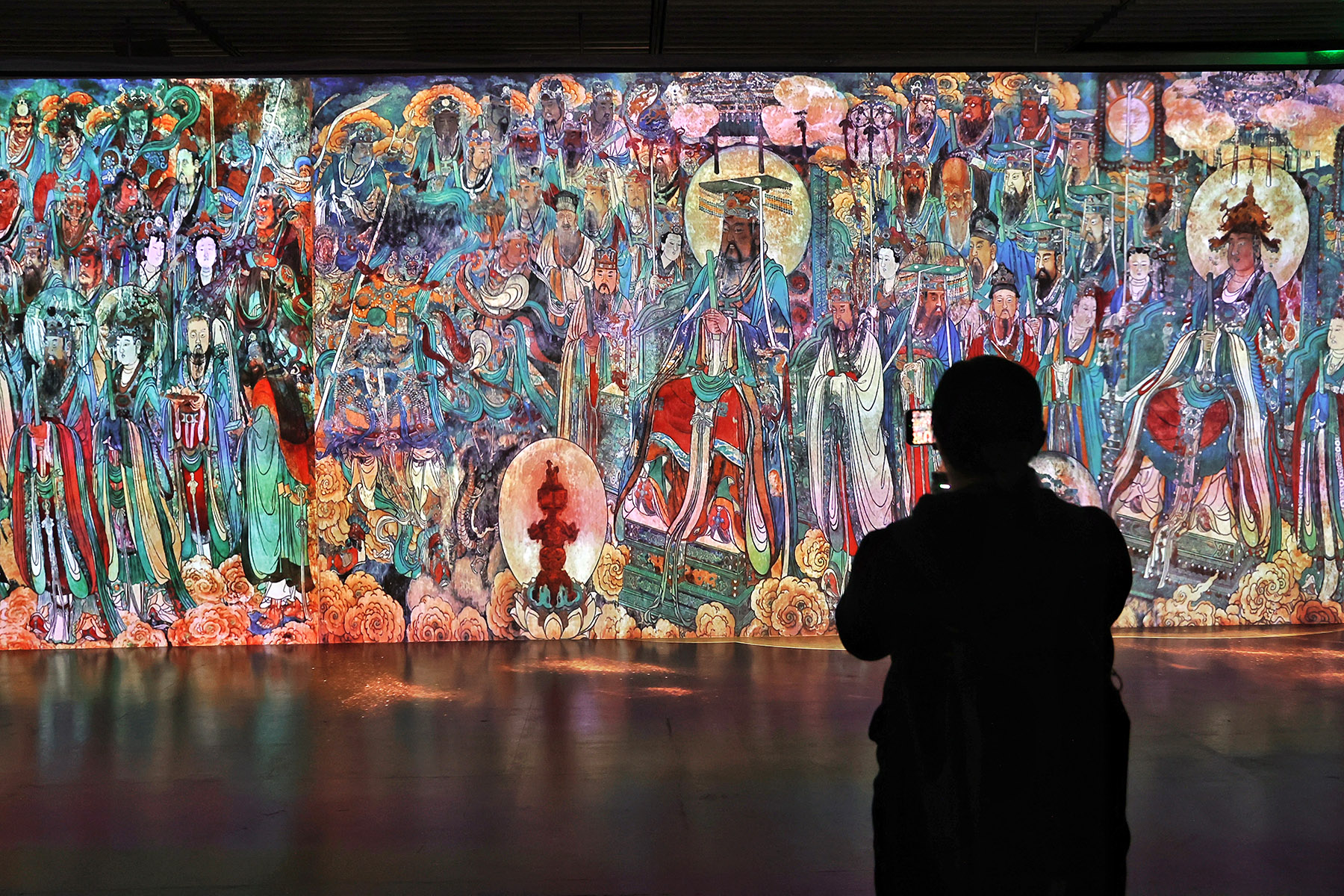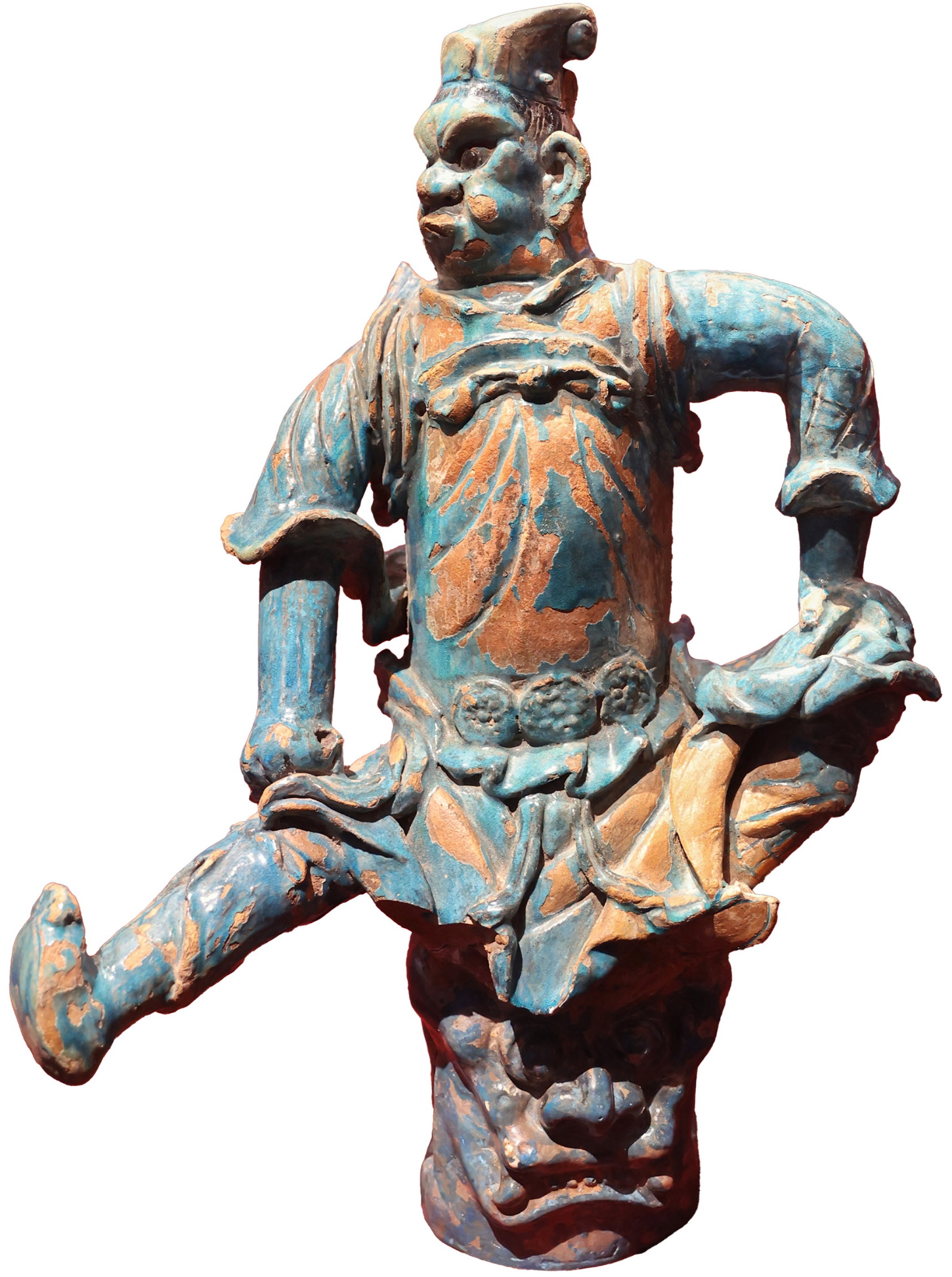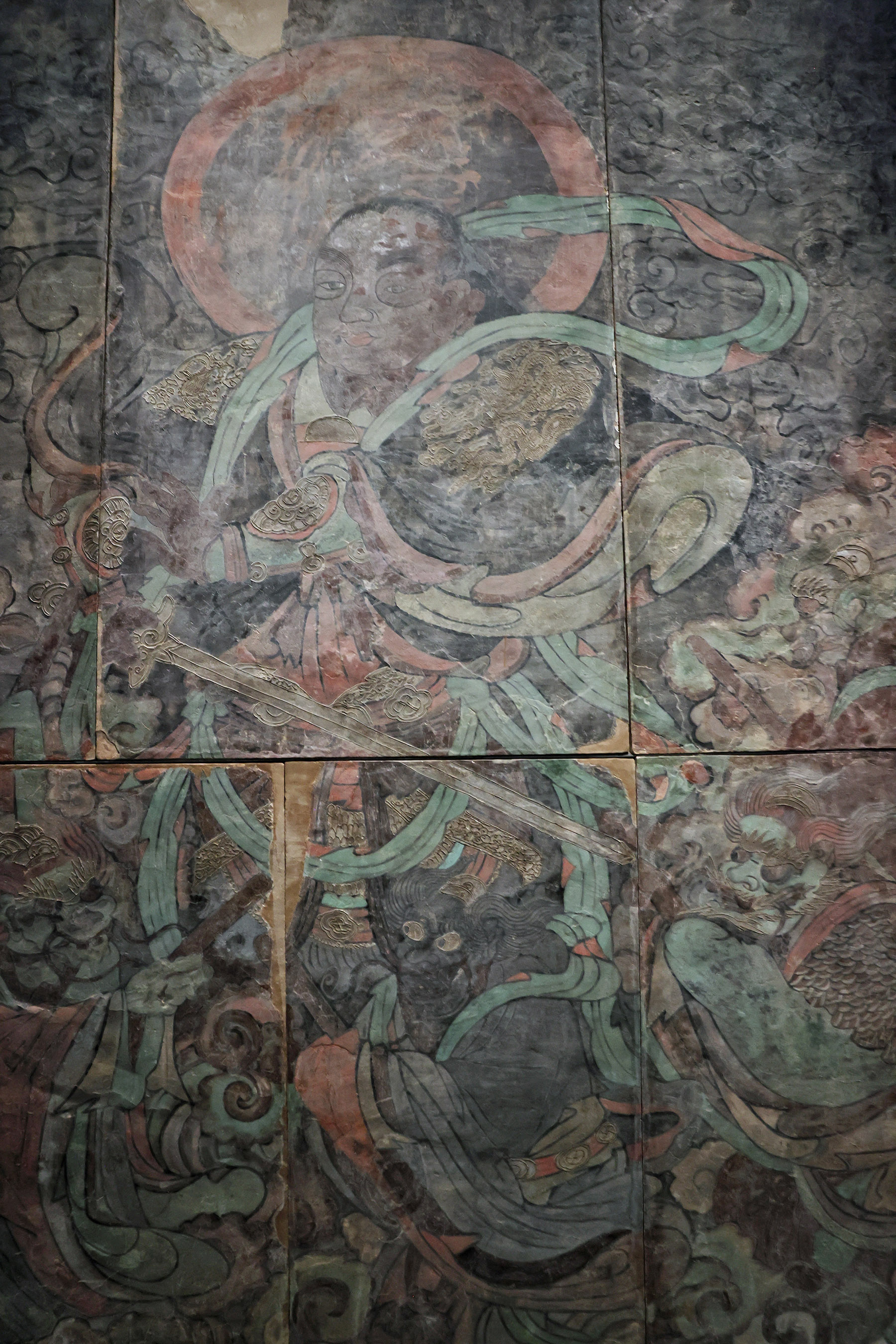Exhibition gives Yongle Palace a new lease of life amid growing public interest in famous centuries-old complex, Wang Kaihao reports.

For 700 years, Yongle Palace, a Taoist temple in Ruicheng, Shanxi province, stood near the Yellow River, where it witnessed the seasons wax and wane.
As its glory faded over time, it was abandoned following the decline of the Quanzhen School of Taoism ("School of All Authenticity"). By 1952, the name of this temple dedicated to the Chinese belief system, had been forgotten, even by nearby villagers.
That year, during the first national cultural relic census conducted by the People's Republic of China, which had been founded three years earlier, researchers were overjoyed to "rediscover" this large Yuan Dynasty (1271-1368) temple complex, which covers an area of 24.8 hectares. They were even more overjoyed to discover that its exquisite murals of Taoist deities still had the power to amaze.
Since then, the temple's extraordinary past has gradually come to light, and the cultural landmark — the only surviving national-level official architectural complex from the Yuan Dynasty discovered to date — has risen again in memory.
READ MORE: AI shows true colors of iconic artwork
The Glory Within Authenticity, an exhibition that opened at the National Library of China in Beijing last week, and which will run through to the end of August, is currently exploring the beauty of Yongle Palace through 150 precious cultural artifacts, including architectural components, murals and documents, as well as digitized images that bring history back to life.
"The wealth of Yongle Palace artifacts reflects a mix of different cultures in creative ways," says An Hai, curator of the exhibition and deputy director of Shanxi provincial institute for protection and research of ancient architecture, painted sculptures and murals.
"They demonstrate features of their era and the latest fruits of research. Studies in recent years also highlight the remarkable value of this temple," he adds.

Witness to history
Begun in 1247, it took a decade for Yongle Palace to achieve the layout visible today. It cost artisans another century to complete the massive murals.
The 13th century was an era of great upheaval, as the Mongol army swept across the Eurasian continent. The Quanzhen School, which advocates a mixture of Taoism, Confucianism and Buddhism, was formed during the Jin Dynasty (1115-1234), and grew in influence as people sought comfort from chaos.
In 1220, famous Taoist monk Qiu Chuji led his disciples on a two-year westward trek to meet Genghis Khan near the Hindu Kush Mountains at the ruler's invitation.
Whether his doctrine about governing through benevolence and peace really changed the Khan's mind, Qiu's theory about protecting life at least persuaded the Mongol leader to give the Quanzhen School official support. It flourished across North China and in Ruicheng, where Lyu Dongbin, a legendary 9th-century Taoist guru was born, Yongle Palace was built by imperial edict, and Qiu's disciples oversaw construction.
"Records say Genghis Khan waived taxes for Quanzhen Taoists," An explains. "And this matches our new findings."
An is referring to an exhibit from Yongle Palace collection, a Taoist certificate from 1245 that confirms this key policy.
"As the certificate shows, he waived the taxes for Taoist monks and wanted them to focus on praying for his family," An says. "Yongle Palace functioned as an important ceremonial center for securing an auspicious destiny for the dynasty."
In a roof decoration from Chongyang Hall, one of the buildings in the Yongle Palace compound, researchers found a roll bearing the words "royal order". After being unpacked, it turned out to be a precious Quanzhen Taoist sutra, known as The Scripture of the Marvelous Treasure of the Highest Mystery of the Numinous Void, Inconceivable Salvation of Living Beings, and Supreme Excellence, and is listed among China's highest-level national cultural artifacts.
"It further proves the high status of Yongle Palace at its peak," An says.
The scroll is on display with other Quanzhen scriptures in a gallery in the national library, and offers visitors a glimpse into the age when Yongle Palace was a place of high-ranking pilgrims.
"Genghis Khan's westward expedition also resulted in cultural exchange, and Yongle Palace may be one example," the curator says, referring to the exhibited chiwen, an ornamental tile that decorates both ends of the ridgepole on the roof.
In ancient Chinese architecture, chiwen were mostly made of pottery or wood before the time of Yongle Palace, but the ones at the temple used a colored glaze, known as liuli, that has not faded even centuries later. The technique for manufacturing them is thought to have been imported from West Asia.
"As lintels in ancient Chinese architecture were usually decorated with colorful paintings, Yongle Palace provided something new, as sculptures were also used," An adds.
"Traditional Chinese decorative patterns are still prevalent, but these new forms tell us about the inclusive nature of Chinese civilization," he explains. "Cultural exchange and learning was never blocked, despite wars."

A relocated wonder
Many visitors may wonder why the Yongle Palace relics were moved to museums. The short and simple answer may be protection.
The rediscovery of this architectural trove in the 1950s soon led to a dilemma, as the temple was located within the planned reservoir area of the Sanmenxia Dam on the Yellow River. Experts from across the country gathered to draft relocation plans.
As the curator recalls, different spots were considered, including the provincial capital Taiyuan where conditions were better, but the final decision was to minimize disturbance. One brick after another, the temple and its murals were carefully moved and rebuilt about 20 kilometers from its original position.
Not all of the architectural components and murals were sturdy enough to be put back, and so some original pieces were stored in warehouses and replaced by replicas.
"Yongle Palace was one of the earliest major cultural heritage conservation projects of New China," An says. "Back then, people finished the job in challenging conditions. They didn't have sufficient electricity, and much of the work was done by bare hand."
In 1961, Yongle Palace became one of 180 spots included in China's first list of cultural heritage sites under national-level key protection.
"Against all odds, the temple survives to this date," An says. "Not only the architecture, but also the relocation became a marvel."
Today, visitors can enjoy a closeup view of some Taoist murals and the entire glazed ridgepole with a pair of 3-meter-high chiwen, that was originally set on the roof of Sanqing Hall, the main building at the Yongle Palace.
Decades after they were removed from a wall, parts of the Ming Dynasty (1368-1644) mural Wu Long Peng Sheng ("five dragons surround Xuanwu god") have been pieced together to be exhibited for the first time.
In 2019, researchers began to intensively research documents and artifacts from the palace to prepare for exhibitions. Numerous artifacts, like the aforementioned Taoist certificate and sutra, emerged from the inventory.
For An, the 20,000-odd pages of detailed records about the relocation have also become precious artifacts.
"That's why we are also displaying digitized pages at the exhibition to remind people of this crucial episode in the past," he says.

Visually reborn
The video game phenomenon Black Myth: Wukong re-creates many important ancient sites in Shanxi, including Yongle Palace, in its design. This has led to a surge in visitors to this place originally designed for inner tranquillity.
"Unfortunately, many historical details have gradually faded with the flow of time," says Wang Yun, head of the exhibition's technical team. "Tourists flocking there may also find that the light in the temple is too dim to fully appreciate its beauty."
Based on digitized materials, Wang's team used artificial intelligence to present a virtual re-creation of the temple's architectural layout and murals in high definition. Through the use of motion-capture, AI has helped to make the Taoist deities in the murals "move "naturally on-screen.
ALSO READ: Homegrown AI tools play key role in preserving cultural heritage
In the gallery, museumgoers can visit dome theaters and virtual reality facilities to experience the temple as it was seven centuries ago.
"To some extent, technology is redefining the relationship between cultural artifacts and the public, and breaks the restrictions of space and time," says Sun Xiaobing, deputy director of Art Exhibitions China, co-organizer of the exhibition. "People can be inspired to explore the beauty of civilization and understand the stories behind the artifacts."
Screens have been set up behind the glazed ridge of the Sanqing Hall, and light projected on the ancient tiles demonstrates the circle of the seasons.
On the roof of an aged temple built by ancient people in the name of immortals, visitors may experience an epiphany, namely that what is really "immortal" is people's awe of time, and love for their preserved history.
Contact the writer at wangkaihao@chinadaily.com.cn


